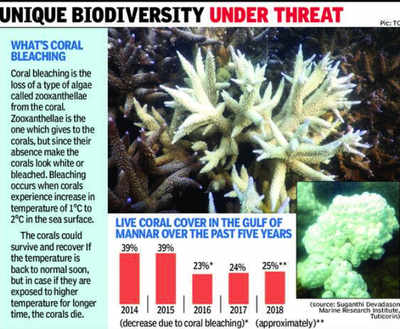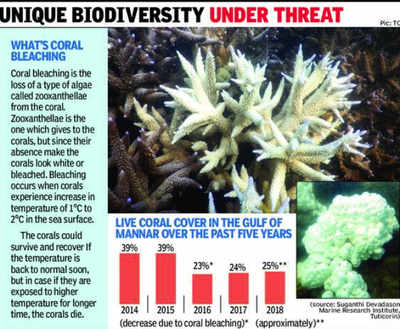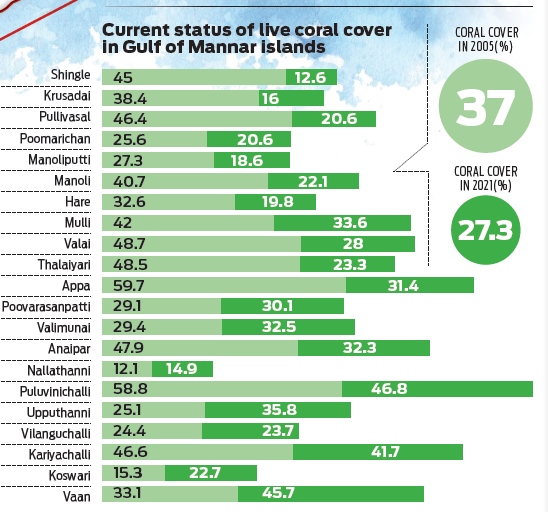|
|
||
|
26 March 2024 |
||
|
1. Coral Cover in Gulf of Mannar Declines to 27%
2. Overview of Global E-waste Trends in 2024
3. Remote Voting Initiative: Vote-from-Home
4. India Shifts from Minimum Wage to ‘Living Wage’ System

1. Coral Cover in Gulf of Mannar Declines to 27%
Context:
The Gulf of Mannar is facing a concerning situation as rising sea temperatures have sparked severe bleaching incidents, resulting in a notable loss of coral life. According to yearly assessments, there has been a decrease in live coral coverage, dropping from 37% in 2005 to 27.3% by 2021.

Insights on Coral Characteristics:
- Corals consist of genetically identical organisms known as polyps, which host microscopic algae called zooxanthellae within their tissues, forming a mutually beneficial relationship.
- The coral provides necessary compounds for photosynthesis to the zooxanthellae, which, in turn, supply the coral with organic products such as carbohydrates.
- These products are utilized by coral polyps to construct their calcium carbonate skeletons. Corals, classified as marine invertebrates, are the largest living structures on Earth. Colonies are formed when polyps multiply, creating copies of themselves.
- Coral reefs, often referred to as the “rainforests of the seas,” comprise hard and soft corals.

Types of Coral:
Hard corals, acting as reef ecosystem engineers, extract calcium carbonate from seawater to construct hard, white exoskeletons. Soft corals attach themselves to existing skeletons, gradually contributing to the reef’s structure.
Optimal Conditions for Coral Growth:
- Coral polyps thrive on extensive submarine platforms not exceeding 90 meters below sea level, with a high mean annual temperature ranging from 20-21 degrees Celsius.
- Clean, sediment-free water is crucial, as muddy or turbid water can obstruct polyp mouths, leading to their demise.
- Additionally, oceanic salinity ranging between 27-30 parts per thousand (ppt) and ocean currents and waves for food supply are essential factors.

Understanding Coral Bleaching:
- Coral bleaching occurs when environmental stressors such as heat, pollution, or increased ocean acidity prompt zooxanthellae to produce harmful reactive oxygen species.
- Consequently, corals expel these algae from their polyps, revealing their pale white exoskeletons.
- This process leads to coral starvation as corals rely on zooxanthellae for nutrition. Severe and prolonged stress can result in coral mortality.
Causes of Decline:
- The Gulf of Mannar faces significant challenges due to predicted coral bleaching events, exacerbated by climatic fluctuations.
- The Intergovernmental Panel on Climate Change (IPCC) forecasts a drastic decline of 70-90% in global coral reefs with a warming of 1.5°C.
- Moreover, increased ocean acidity from carbon dioxide absorption further stresses corals, impeding their ability to calcify.
2. Overview of Global E-waste Trends in 2024



